Use an agency-neutral brand theme throughout the leased area to align with the Government branding approach.
Planning the theme at the beginning of the overall building refurbishment or new build process means the final result will set the scene for the entire look and feel of the office.
Avoid theming the office environment in your own agency brand theme, as this doesn't align with the New Zealand Government approach.
Consider adopting one or all of the following agency-neutral themes:
Get creative with the decision, and engage with staff at your agency to make sure they feel involved.
When using Māori themes, be sure to engage with local Iwi and your agency's cultural or Māori advisor as appropriate.
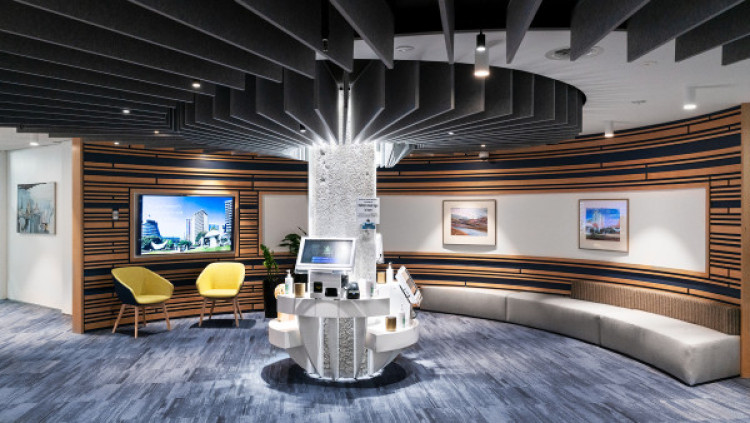
A reception area with a strong theme
Māori culture forms a distinctive part of New Zealand culture – rich and varied, with both traditional and contemporary elements. To promote and encourage the use of te reo Māori, meeting rooms can be named after Māori flora and fauna, or colours, with bilingual signage and an associated image as an example.
Areas for exhibiting artworks should be planned as part of the design process, along with te reo Māori and English signage.
Consult with local iwi and hapū before incorporating any cultural designs.
Find Iwi by local authority – Te Puni Kōkiri Ministry of Māori Development
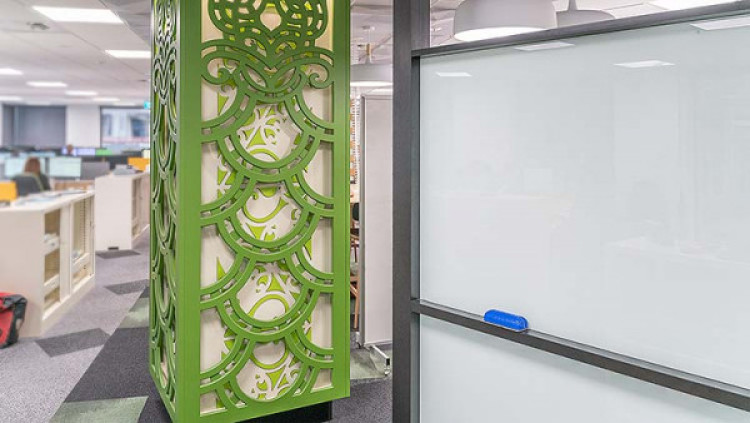
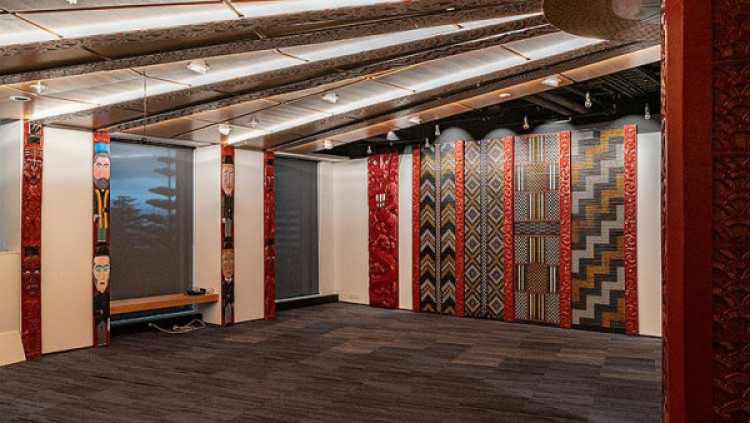
Good examples of cultural design in the Treasury, Wellington
An agency could base their office theme on neutral New Zealand locations, including those related to the office location.
For example, famous landmarks – whether they are natural or artificial – can be showcased throughout the office. An office located in Auckland could have the CBD skyline frosted on glass walls or printed on lockers, and the names of meeting rooms could be Auckland street names. Other locational themes could include the following:
Using Māori tūpuna names and names of significance to Māori, such as the tribal waka and names of iwi and hapū for rooms, should always be cleared with the local iwi and hapū.
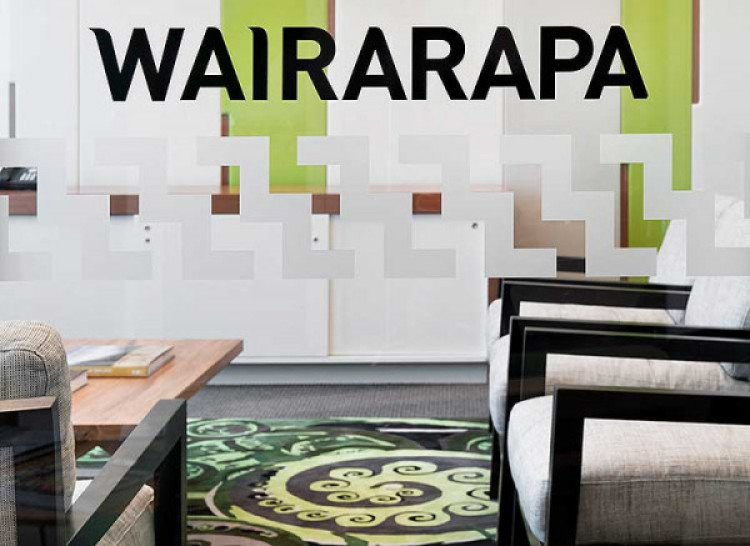
An example of using the name of a New Zealand region as a meeting room name
The look and feel of the office could be themed on neutral New Zealand history connected to the building or location.
For example, the Bolton Hotel on Bolton Street in Wellington is named and also themed around a ship named the Bolton that arrived at Wellington Harbour in 1840. Another example is meeting rooms named after famous New Zealanders who have made major historical achievements. If you use people’s names, it is essential that you seek any relevant permissions from them or their whānau, iwi or hapū.
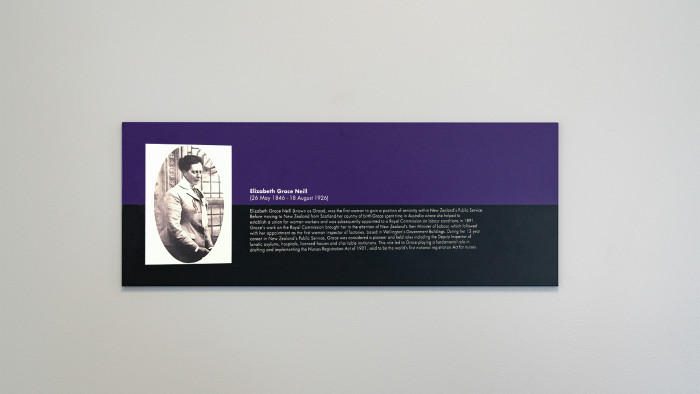
A sign for a room showing historical theming from Te Kawa Mataaho, Wellington
Alternatively, agencies can apply a very neutral theme with a contemporary office environment by not applying any specific theme. Instead you can use contemporary colours, materials and basic patterns. This can be the favoured approach when various interchangeable agencies are using the same space such as kitchen areas, or collaboration and co-working spaces.
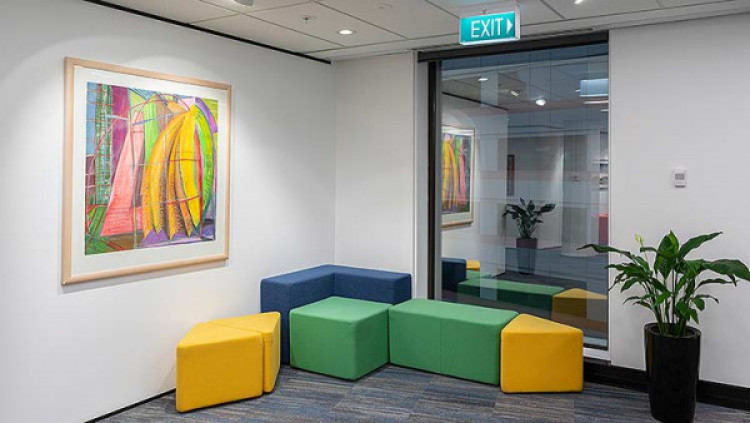
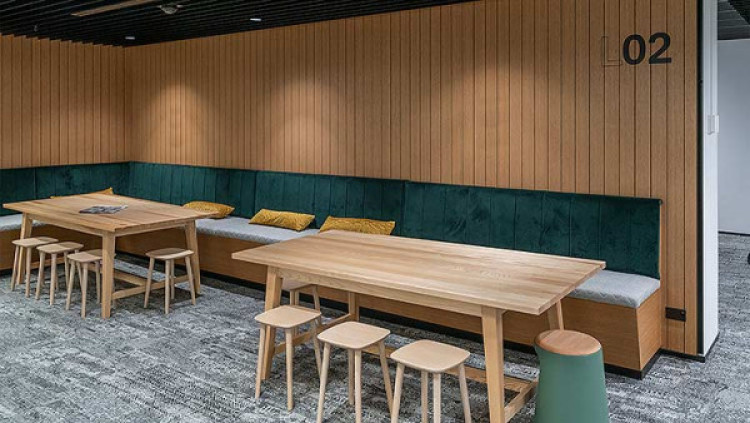
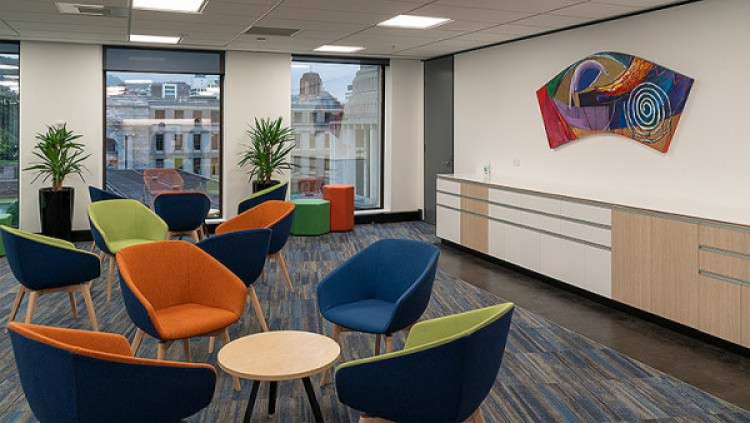
Examples of contemporary design for sitting areas